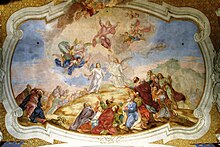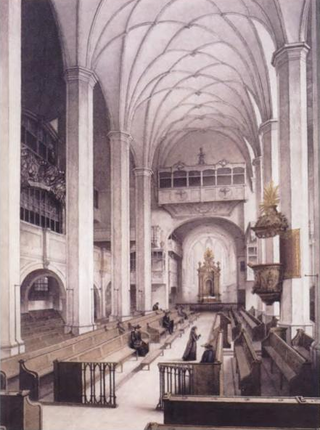
Wir müssen durch viel Trübsal, BWV 146, is a cantata by Johann Sebastian Bach, a church cantata for the third Sunday after Easter. Bach composed it in Leipzig in 1726 or 1728.

Herr, wie du willt, so schicks mit mir, BWV 73, is a church cantata by Johann Sebastian Bach. He composed it for the third Sunday after Epiphany and first performed it in Leipzig on 23 January 1724. It was probably composed shortly before the first performance.

Wer da gläubet und getauft wird, BWV 37, is a cantata by Johann Sebastian Bach, a church cantata for the feast of the Ascension of Jesus. Bach composed it in Leipzig and first performed it on 18 May 1724.
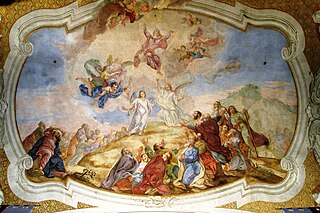
Gott fähret auf mit Jauchzen, BWV 43, is a church cantata by Johann Sebastian Bach. He composed it in Leipzig for the Feast of the Ascension and first performed it on 30 May 1726. It begins with a quotation from Psalm 47.

Johann Sebastian Bach composed the church cantata Ihr, die ihr euch von Christo nennet, BWV 164 in Leipzig for the 13th Sunday after Trinity and first performed it on 26 August 1725.

Johann Sebastian Bach composed the church cantata Bringet dem Herrn Ehre seines Namens, BWV 148, probably in 1723 in Leipzig for the 17th Sunday after Trinity.
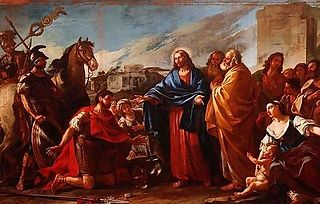
Johann Sebastian Bach composed the church cantata Ich glaube, lieber Herr, hilf meinem Unglauben, BWV 109, in Leipzig for the 21st Sunday after Trinity and first performed it on 17 October 1723.
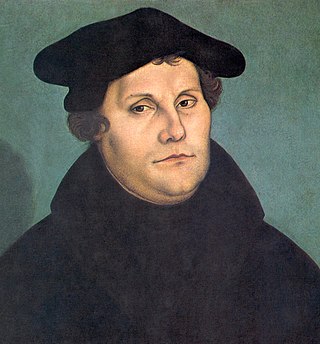
Gelobet seist du, Jesu Christ, BWV 91, is a church cantata by Johann Sebastian Bach. He wrote the Christmas cantata in Leipzig in 1724 for Christmas Day and first performed it on 25 December 1724. The chorale cantata is based on the hymn "Gelobet seist du, Jesu Christ" (1524) by Martin Luther.

Sie werden euch in den Bann tun, BWV 183, is a church cantata by Johann Sebastian Bach. He composed it in Leipzig for Exaudi, the Sunday after Ascension, and first performed it on 13 May 1725. The work includes some unusual woodwind scoring, two oboes da caccia and two oboes d'amore.

Gelobet sei der Herr, mein Gott, BWV 129, is a church cantata by Johann Sebastian Bach. It is a chorale cantata performed on Trinity Sunday 8 June 1727 in Leipzig. Rediscovery of the printed libretto of the cantata in the first decade of the 21st century led to a re-appraisal of prior assumptions regarding the early performance chronology of a few cantatas, including this one.

Johann Sebastian Bach composed the church cantata Nimm von uns, Herr, du treuer Gott, BWV 101 in Leipzig for the tenth Sunday after Trinity and first performed it on 13 August 1724. The chorale cantata is based on the hymn by Martin Moller (1584).

Johann Sebastian Bach composed the church cantata Herr Jesu Christ, du höchstes Gut, BWV 113 in Leipzig for the eleventh Sunday after Trinity and first performed it on 20 August 1724. The chorale cantata is based on the hymn "Herr Jesu Christ, du höchstes Gut" by Bartholomäus Ringwaldt (1588).

Johann Sebastian Bach composed the church cantata Was Gott tut, das ist wohlgetan, BWV 99, in Leipzig for the 15th Sunday after Trinity and first performed it on 17 September 1724. The chorale cantata is based on the hymn "Was Gott tut, das ist wohlgetan" by Samuel Rodigast (1674).
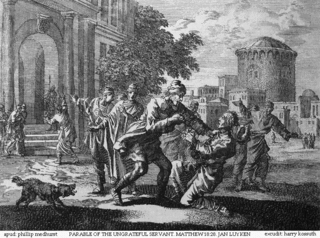
Johann Sebastian Bach composed the church cantata Was soll ich aus dir machen, Ephraim, BWV 89, in Leipzig for the 22nd Sunday after Trinity and first performed it on 24 October 1723.

Liebster Immanuel, Herzog der Frommen, BWV 123, is a church cantata by Johann Sebastian Bach. He composed the chorale cantata in Leipzig for Epiphany and first performed it on 6 January 1725. It is based on the hymn by Ahasverus Fritsch (1679).

Meinen Jesum laß ich nicht, BWV 124, is a church cantata written by Johann Sebastian Bach. He composed the chorale cantata in Leipzig for the first Sunday after the Epiphany and first performed it on 7 January 1725. It is based on the hymn "Meinen Jesum laß ich nicht" by Christian Keymann.
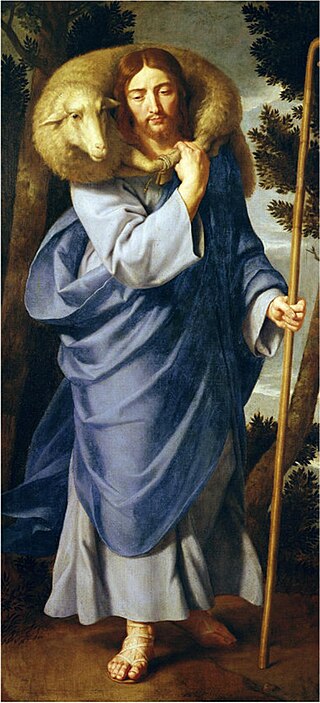
Ich bin ein guter Hirt, BWV 85, is a church cantata by Johann Sebastian Bach. He composed it in Leipzig for the second Sunday after Easter and first performed it on 15 April 1725.

Bisher habt ihr nichts gebeten in meinem Namen, BWV 87, is a church cantata by Johann Sebastian Bach. He composed it in Leipzig for Rogate, the fifth Sunday after Easter, and first performed it on 6 May 1725.

Also hat Gott die Welt geliebt, BWV 68, is a cantata by Johann Sebastian Bach, a church cantata for the second day of Pentecost. Bach composed the cantata in Leipzig and first performed it on 21 May 1725. It is one of nine cantatas on texts by Christiana Mariana von Ziegler, which Bach composed at the end of his second annual cycle of cantatas in Leipzig. In a unique structure among Bach's church cantatas, it begins with a chorale and ends with a complex choral movement on a quotation from the Gospel of John. Bach derived the two arias from his Hunting Cantata.

Der Herr ist mein getreuer Hirt, BWV 112, is a cantata by Johann Sebastian Bach, a church cantata for the second Sunday after Easter. Bach composed the chorale cantata in Leipzig and first performed it on 8 April 1731. It is based on the hymn by Wolfgang Meuslin, a paraphrase of Psalm 23 written in 1530, sung to a melody by Nikolaus Decius.
